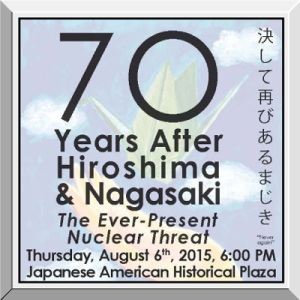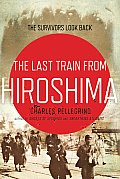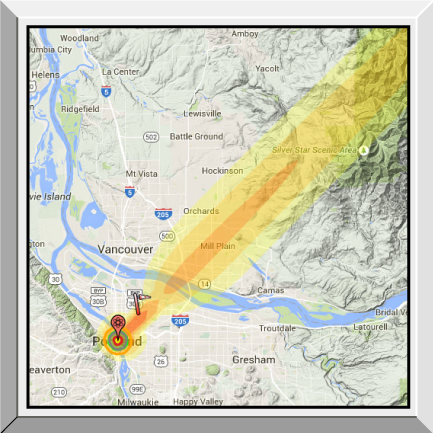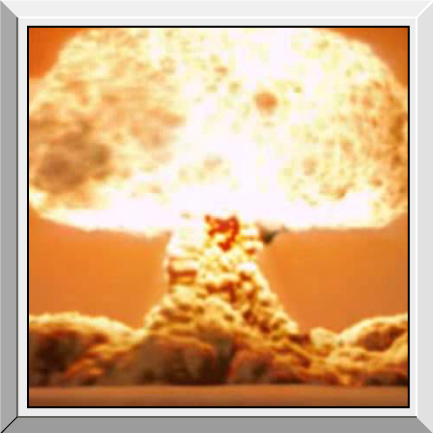 70 years since the world changed forever
70 years since the world changed forever
70 years ago, America became the first and, so far, only country to use nuclear weapons in war. On August 6, 1945, the Enola Gay dropped a bomb on Hiroshima that exploded with a force of 15,000 tons (15Kt) of TNT, and on August 9 the Bockscar dropped a 20Kt bomb on Nagasaki. Combined injured and dead in both cities totaled almost 200,000, and the Japanese government announced its surrender on August 15. WWII had ended, and the Cold War was about to begin. Ethical debates about the bombings continue today, but before we can learn the lessons of Hiroshima and Nagasaki we must first acknowledge their reality. We must remember the dead…
That’s one reason Oregon Physicians for Social Responsibility and their partner organizations are inviting you to the annual commemoration of the atomic bombings of Hiroshima and Nagasaki, tomorrow, August 6th, beginning at 6:00 PM at the Japanese American Historical Plaza at Waterfront Park in downtown Portland. The title for this year’s event is: “70 Years After Hiroshima and Nagasaki: The Ever-Present Nuclear Threat”. The event will feature speakers including atomic bomb survivor Michiko Kornhauser and anti-nuclear activist Carol Urner, with emcee Ronault LS Catalani and performances by Portland Taiko, Tomodachi Chorus, Sahomi Tachibana’s dance group and more. There will also be opportunities for attendees to learn more about and to get involved in international efforts to abolish nuclear weapons.
For more information, please contact Kelly Campbell, Executive Director of Oregon Physicians for Social Responsibility (OPSR), by phone at 503.274.2720 or email at kelly@oregonpsr.org. You can also visit the OPSR website at PSR.org, or check out the event page and Facebook page for the Hiroshima commemoration. It’s a somewhat solemn invitation, but one that we think is worthy of sharing with you. We hope to see you there.
 For our own commemoration of Hiroshima and Nagasaki, we bring you two other resources. The first is a book entitled “The Last Train From Hiroshima” by Charles Pellegrino. This haunting book relates stories from Hiroshima survivors, but concentrates on the words of an even rarer group… people who survived both Hiroshima and Nagasaki.
For our own commemoration of Hiroshima and Nagasaki, we bring you two other resources. The first is a book entitled “The Last Train From Hiroshima” by Charles Pellegrino. This haunting book relates stories from Hiroshima survivors, but concentrates on the words of an even rarer group… people who survived both Hiroshima and Nagasaki.
 As we get further from the actual event it can be easier to see the bombings as just historical statistics, so our second resource is designed to personalize the threat of atomic weapons. What would it look like if an atomic bomb exploded in YOUR city? Alex Wellerstein, nuclear historian at the Stevens Institute of Technology, created NukeMap to show you. Pick any point on a map and see exactly how far the destruction would range if the bomb hit there. Options include factors like airburst, groundburst, or fallout drift. It’s educational to vary the weapon size a little… the Hiroshima bomb was 15Kt, but common nukes today hit the 100-500Kt range, larger ones run towards 200,000Kt, and the Tsar Bomba, the largest nuke ever tested, yielded a blast of 50Mt (50,000,000 tons of TNT)!
As we get further from the actual event it can be easier to see the bombings as just historical statistics, so our second resource is designed to personalize the threat of atomic weapons. What would it look like if an atomic bomb exploded in YOUR city? Alex Wellerstein, nuclear historian at the Stevens Institute of Technology, created NukeMap to show you. Pick any point on a map and see exactly how far the destruction would range if the bomb hit there. Options include factors like airburst, groundburst, or fallout drift. It’s educational to vary the weapon size a little… the Hiroshima bomb was 15Kt, but common nukes today hit the 100-500Kt range, larger ones run towards 200,000Kt, and the Tsar Bomba, the largest nuke ever tested, yielded a blast of 50Mt (50,000,000 tons of TNT)!
(Click here to see the Tsar Bomba detonation)











